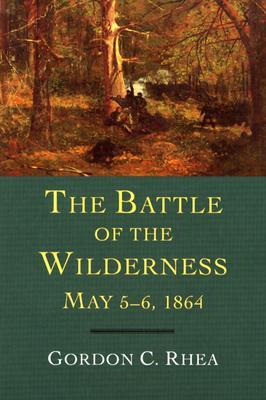
Gordon Rhea is an attorney and Civil War historian. He’s written several highly regarded books about the war, including The Battles for Spotsylvania Court House and the Road to Yellow Tavern, May 7–12, 1864 (1997), To the North Anna River: Grant and Lee, May 13–25, 1864 (2000), Cold Harbor: Grant and Lee, May 26–June 3, 1864 (2002), Carrying the Flag: The Story of Private Charles Whilden, the Confederacy’s Unlikely Hero (2004), and On to Petersburg: Grant and Lee, June 4–14, 1864 (2017).
His books have received a number of awards and recognitions, and he’s served as a lecturer at the U.S. Army Training and Doctrine Command and as a commentator for CNN. I discovered his The Battle of the Wilderness, May 5–6, 1864, published in 1994 by LSU Press, when another writer of another Civil War book spoke of the Rhea work in almost reverential tones. I discovered the book was still in print, available in paperback and on Amazon Kindle. The hardcover is also available in used editions.
And what a story Rhea tells.

The Battle of the Wilderness was the first major confrontation between Ulysses S. Grant, newly appointed by Abraham Lincoln to lead the Northern armies, and Robert E. Lee, commander of the Confederacy’s Army of Northern Virginia. It was an effort by Grant to break through the stalemate around Richmond and capture the Confederate capital. Fought over roads, some open fields, and the dense woods known as the Wilderness, the battle pitted the wills of two opposing commanders, both of whom were determined to prevail at almost any cost.
The battle would end in stalemate, with both sides gaining and losing something. The number of casualties places the battle in one of the top five in the Civil War. The Union had between 17,000 and 18,000 dead, wounded, and missing or captured. The Confederacy had between 11,000 and 12,000. But the overall losses were greater in ultimate impact for the Lee’s army, because these were losses that could not be replaced. And both sides experienced the loss of key generals.

Rhea tells the story almost like a novel. It’s an enthralling, riveting read, with the action so immediate that the reader feels a direct part of it. The first day went mostly to Lee’s army; the second day began with a Union breakthrough, but it was soon turned back with the forces of General James Longstreet arriving at the last possible minute and almost too late. Lee would also lose General J.E.B. Stuart, who died of his wounds a few day after the battle ended.
Drawing upon official records, diaries, letters, and news reports, Rhea tells the story not only from the generals’ perspective but also from that of the men fighting on the ground, often face-to-face in woods burning from the artillery fire. And it’s a comprehensive story, made all the more remarkable with how complex this battle actually was. Rhea sorts it out and helps the reader understand exactly what happened. He also includes numerous maps and illustrations to aid understanding.
I’ve read quite a few books about the Civil War, and The Battle of the Wilderness ranks as one of the very best.
Related:
Hell Itself: The Battle of the Wilderness, May 5-7, 1864 by Chris Mackowski.
Top illustration: Map of the Battle of the Wilderness, made in 1895 (via Wikimedia Commons).














